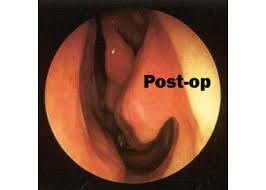Radiofrequency is a minimally invasive therapy that causes a controlled and prudent heating in the tissue. This leads to an immediate volume reduction that subsequently continues during the process of inflammation and scarring being an important advantage over other cutting techniques such as the cold bisturi. The electric bisturi or the laser is the non-damage to the mucosa and thus the conservation of its function, besides being a less painful technique.
In the field of otorhinolaryngology we highlight three main indications for radiofrequency:
1. Radiofrequency of turbinates. To improve nasal breathing, for example in allergic rhinitis, vasomotor rhinitis or turbinate hypertrophy. The intervention is done with local anesthesia or sedation and lasts 20 to 30 minutes. Then the patient can continue his life without limitations. For 4-6 weeks a post-operative cure is prescribed with seawater and some ointments as well as regular check-ups with the otolaryngologist is required. The result is excellent, if the indication has been done correctly.


2.Radiofrequency of the palate. To treat snoring. A reduction in volume and tension due to scarring are induced at different points of the soft palate. The procedure is performed under local anesthesia and lasts approximately 20 minutes. For 1-2 weeks there is a sore throat that is treated with analgesics. The result is very good when the indication has been done correctly. There are usually more factors to consider with the subject of snoring.

3. Radiofrequency of tonsils. It is a treatment to reduce the volume of the tonsils, which can help children to breathe more easily, in adults it is considered part of the treatment for snoring. An important advantage is the preservation of the immunological function of the tonsils and the minimized risk of a postoperative hemorrhage. The intervention is usually performed under general anesthesia, in adults also under local anesthesia. The results are excellent when the indication has been made correctly.







